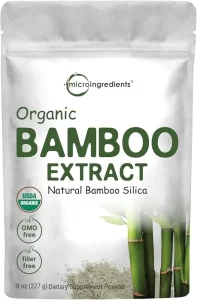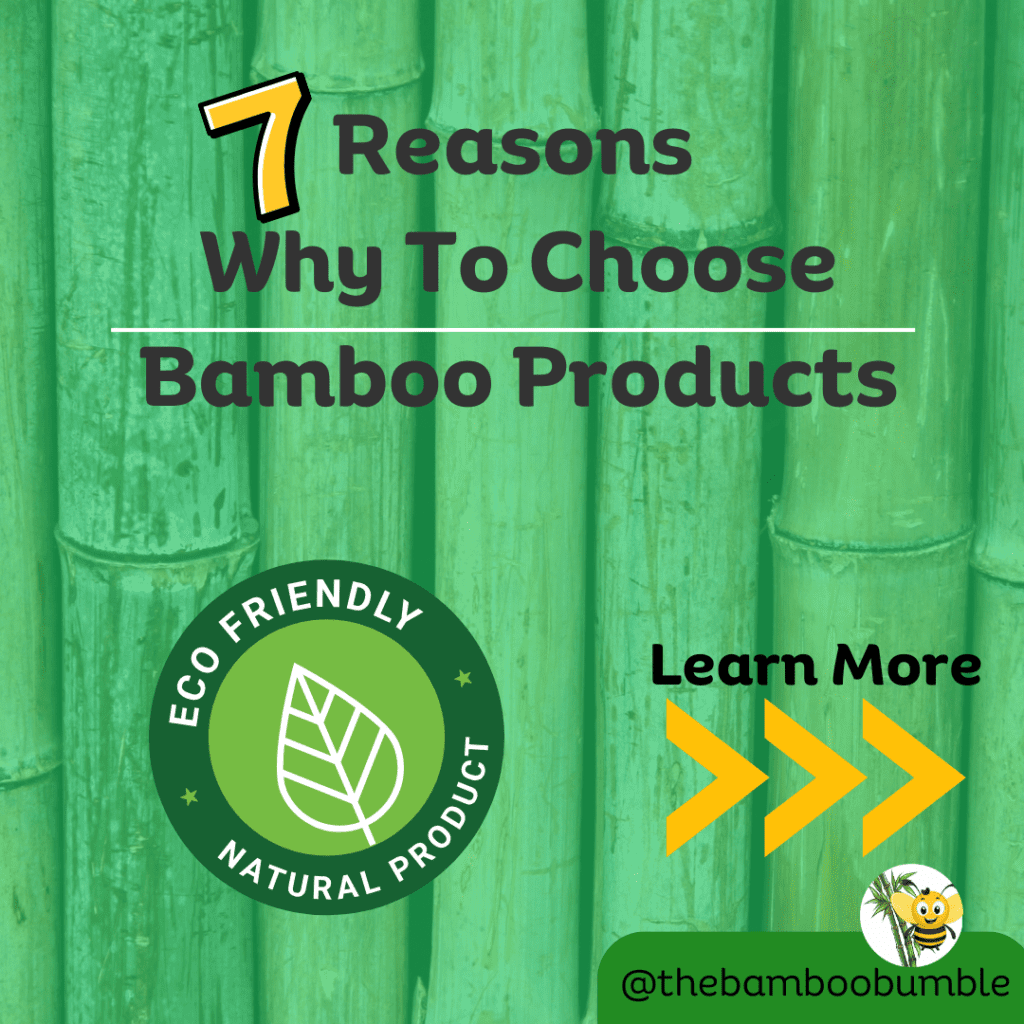Savor the Green: Unveiling the Delights of Edible Bamboo
Did you know over 1 billion people in Asia find their daily delights in bamboo, including some seriously yummy eats? 🥢 Sure, bamboo shoots might have popped up in your stir-fry, but there’s a whole world of bamboo-based yumminess waiting for you! ‘Savor the Green’ is more than just a guide; it’s your ticket to the bamboo bonanza on your plate. 🍽️ Dive into the chapters to uncover the juiciest bamboo picks, master the art of bamboo cuisine, and get the lowdown on why this green marvel is more than just a treat for your taste buds. Ready to mix up your meals? Let’s turn the page and transform your kitchen into a bamboo haven! 🍃
Table of Contents
Key Takeaways: The Essence of Edible Bamboo
Unlock the full potential of edible bamboo in your culinary adventures with these essential insights: 🌿🍽️
- Beyond Stir-Fries and Salads: Bamboo, particularly the Dendrocalamus species, is a culinary delight waiting to be explored in steaming, sautéing, and souping. 🥘
- Age Matters in Flavor and Texture: Young bamboo shoots offer a tender, sweet experience, while young timber bamboo shoots add a heartier twist to dishes. 🌱
- Harvesting and Preparation Tips: Proper harvesting, which includes cutting at soil level and boiling to enhance flavor, is key to unlocking bamboo’s best taste. 🍳
- Nutritional Powerhouse: Bamboo shoots are not just tasty but also packed with dietary fiber, vitamins, minerals, and phytonutrients, making them a healthy addition to any meal. 🥗
- Health Benefits Beyond the Kitchen: Bamboo’s high fiber and low-calorie profile make it excellent for weight management, digestion, and overall wellness. 🌟
- Safety First: Understand and mitigate the risks associated with cyanogenic glycosides in bamboo through proper preparation techniques like boiling and fermenting. 🔍
- Culinary Pairing Suggestions: Bamboo’s subtle flavor makes it a versatile ingredient that pairs well with a variety of proteins, veggies, and sauces. 🍛
- Storage and Preservation Know-How: Learn the best practices for storing and preserving bamboo shoots to maintain their freshness and nutritional value. ❄️
- Finding Bamboo Shoots: Know where to source the freshest bamboo shoots, whether from local markets or specialized online stores. 🛍️
A Culinary Adventure: Discovering the Tastiest Bamboo Varieties for Your Plate
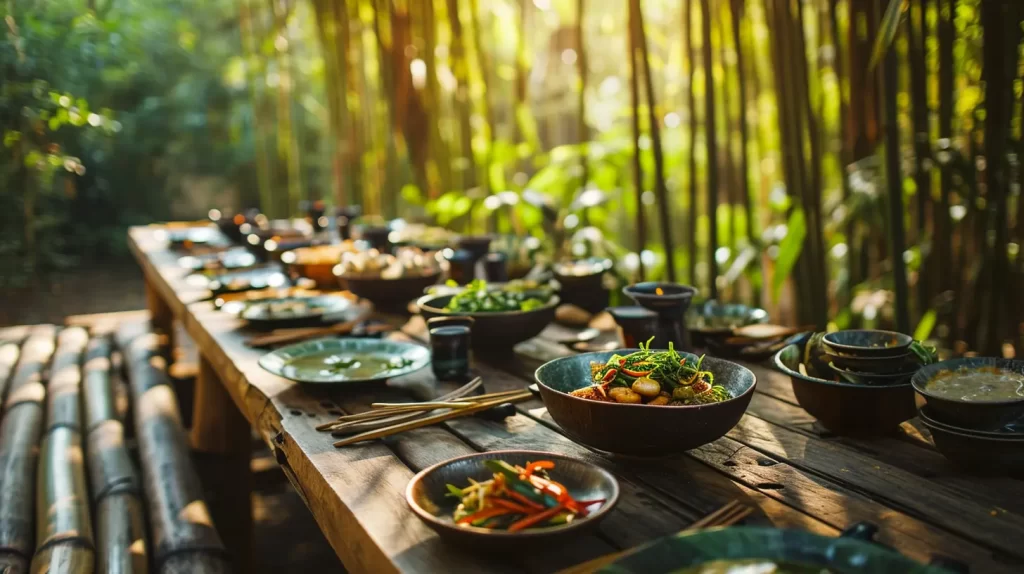
Embark on a culinary journey with bamboo – a green giant that’s not just for pandas! 🐼 The Dendrocalamus species, towering and impressive, hides a flavor that’s nothing short of a delicacy. When you’re exploring bamboo for your culinary experiments, think about the plant’s age:
- Young bamboo shoots: Tender, subtle sweetness, perfect for a light, refreshing bite.
- Mature timber bamboo: Offers a robust, more pronounced flavor, though not commonly eaten.
Each variety brings a unique texture and taste to the table, transforming your regular dishes into an extraordinary bamboo feast. 🎉 Let’s delve into the different bamboo types that can add a unique twist to your culinary creations.
Dendrocalamus species: A Hidden Delicacy
Discover the Dendrocalamus species, the unsung hero of the bamboo world. This species is not just about grandeur and height; it’s a culinary treasure trove:
- Tender Shoots: Ideal for a variety of dishes, from savory stir-fries to refreshing salads.
- Sweet Flavor Profile: A subtle sweetness that enhances any dish, making it a favorite among chefs.
Why not bring Dendrocalamus into your kitchen? Experiment with its versatility by steaming, sautéing, or adding it to soups. Embrace this hidden delicacy and let your taste buds revel in one of nature’s finest flavors. 🌿👩🍳
Young vs. Timber Bamboo: What’s on Your Plate
Bamboo’s culinary appeal lies in its age. Here’s what you need to know:
- Young Bamboo Shoots: Harvested early, they are soft, tender, and slightly sweet. Ideal for:
- Stir-fries for a crunchy twist.
- Soups and pickles for a unique flavor.
- Timber Bamboo: The mature version is tough and fibrous, not commonly used in cooking. But, its young shoots are a different story:
- Edible and delicious when harvested young.
- Adds an adventurous twist to your traditional bamboo dishes.
Next time you’re browsing the market, keep an eye out for these bamboo varieties. Whether it’s the youthful tenderness or the unexpected delight of timber bamboo shoots, each brings its own flair to your culinary adventures. 🌟🛍️
Culinary Pairing Suggestions: Making Bamboo the Star of Your Plate
Now that you’re familiar with the wonders of bamboo, let’s talk about turning it into a culinary sensation. Bamboo’s unique texture and flavor make it a versatile companion in the kitchen. Whether you’re whipping up a quick meal or a gourmet feast, here’s how to make bamboo shine in your dishes. 🌟🍛
Perfect Protein Pairings: Bamboo Meets Its Match
When it comes to proteins, bamboo shoots are a versatile sidekick, enhancing a variety of dishes with their subtle flavor and satisfying crunch:
- With Chicken: 🐔 Transform your chicken dishes by adding bamboo for a delightful crunch. Perfect in stir-fries, they add texture to chicken salads and can even be a crunchy topping for chicken casseroles.
- Seafood Symphony: 🐟🍤 Bamboo shoots bring an oceanic adventure to seafood dishes. They add a refreshing crunch to shrimp tempura, give fish tacos an extra layer of texture, and can even elevate a simple grilled fish dish.
- Vegetarian Delights: 🌱 For a plant-based twist, pair bamboo with tofu or tempeh. The shoots absorb the flavors while adding a pleasant bite, making them ideal for vegan stir-fries, tofu scrambles, or tempeh bowls.
These pairings are not just about taste – they create a balanced nutritional profile, adding both health and flavor to your meals.
Veggies and Sauces: Creating a Flavor Symphony
Bamboo shoots can transform a simple vegetable dish into a culinary masterpiece with the right pairings:
- Leafy Greens: 🍃 Combine bamboo with spinach, kale, or bok choy for a power-packed meal. Whether it’s in a warm salad, a hearty soup, or a sautéed side dish, bamboo adds texture and nutrition.
- Sauce Harmony: 🥣 Bamboo shoots are like sponges for flavors. Marinate them in soy sauce, toss them in oyster sauce, or drizzle them with a spicy Szechuan sauce for an umami-packed experience. They’re perfect for absorbing the rich flavors of your favorite sauces.
- Stir-Fry Stars: 🌶️ Add bamboo shoots to your stir-fries for an extra crunch. Mix them with colorful bell peppers, sweet carrots, and tangy onions. They not only add a fresh crunch but also make your stir-fries more vibrant and nutritious.
By incorporating these suggestions, you elevate bamboo from a humble ingredient to a star performer on your plate, creating dishes that are as nutritious as they are delicious. 🌟🍲
Storage and Preservation: Keeping Your Bamboo Fresh and Ready 🌿❄️
Ensuring your bamboo shoots stay fresh and flavorful is key to enjoying their culinary potential. Let’s explore the best practices for storing and preserving bamboo shoots, so you can savor their crunch and nutrition whenever you crave.
Storing Fresh Bamboo Shoots: Maximizing Freshness
Fresh bamboo shoots have a limited shelf life, but with the right storage techniques, you can extend their freshness:
- Refrigeration: 🧊 Keep fresh bamboo shoots in the refrigerator, ideally in the vegetable crisper. Wrap them in a damp paper towel and place them in a perforated plastic bag to maintain humidity without excess moisture.
- Freezing for Longevity: ❄️ If you can’t use your bamboo shoots right away, freezing is a great option. Blanch them first in boiling water for two minutes, plunge into ice water to stop the cooking process, then drain and pack in airtight containers or freezer bags.
- In Water: 🚰 For short-term storage, submerge whole bamboo shoots in water and keep them in a cool place. Change the water daily to keep them fresh for a few days.
These storage methods help maintain the shoots’ texture and nutritional value, ensuring they’re always ready for your next culinary adventure.
Preserving Bamboo Shoots: Long-Term Solutions
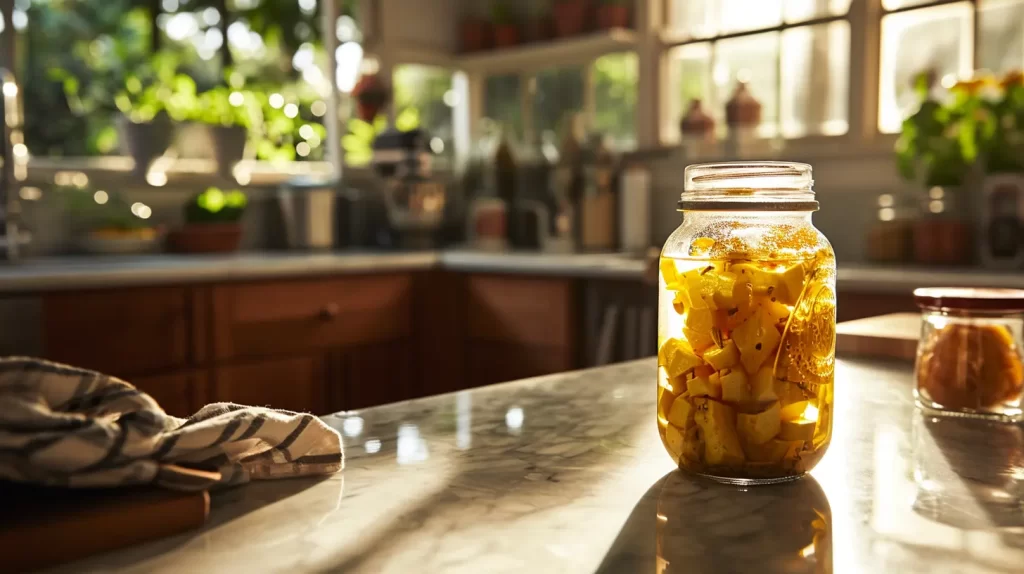
For those looking to keep bamboo shoots handy for extended periods, here are some effective preservation techniques:
- Pickling: 🥒 Transform bamboo shoots into a tangy treat by pickling them. Use vinegar, salt, sugar, and your choice of spices to create a flavorful brine. Pickled bamboo shoots can add a zesty twist to salads, sandwiches, or as a standalone snack.
- Canning: 🥫 Canned bamboo shoots are convenient and have a long shelf life. You can can them at home using a pressure canner, following proper canning guidelines to ensure safety.
By mastering these storage and preservation methods, you’ll always have bamboo shoots at the ready, be it for a spontaneous stir-fry or an exotic addition to your meals. 🍜🌿
Harvest to Hearth: Mastering the Art of Preparing Edible Bamboo
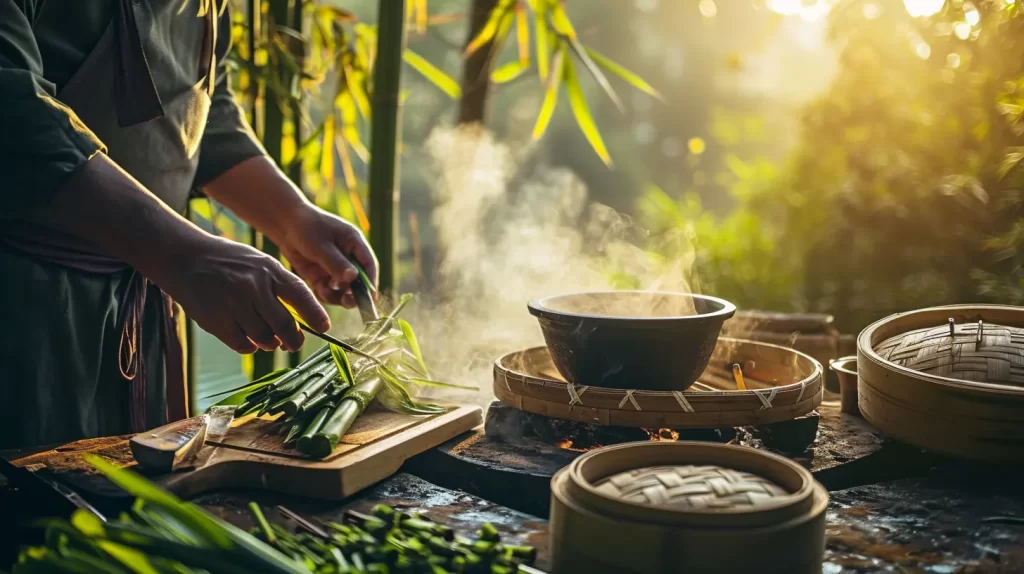
Turning bamboo into a culinary masterpiece starts right from the moment of harvest. Follow these steps from picking the freshest shoots to boiling them to perfection. We’ll make sure your bamboo dishes are as tantalizing as they are nourishing! 🍳🌱
Tips for Harvesting Fresh Bamboo
Harvesting bamboo isn’t just about chopping; it’s about timing, technique, and tools. Here’s your quick guide to getting it right:
- Choose the Right Time:
- Spring, the season of tenderness.
- Early mornings for the freshest picks.
- Look for shoots around 6-12 inches – they’re just right.
- Use Proper Tools:
- A sharp knife or spade for precise cuts.
- Gloves – safety first from those splinters!
- Harvesting Method:
- Cut at soil level to encourage regrowth.
- Peel back the layers to find the edible heart.
- Rinse well to wash away the garden’s embrace.
Preparing Bamboo: A Step-by-Step Guide
Now, let’s transform these bamboo shoots into culinary gold:
- Peeling: Unveil the tender heart by shedding the tough exterior.
- Slicing: Size matters! Bite-sized for stir-fries, chunkier for braises.
- Boiling: This is where magic happens. Boil for 20 minutes to kiss goodbye to bitterness.
- Rinsing: A cold water splash to halt the cooking – precision is key!
With these steps, you’re all set to whip up anything from a zingy bamboo salad to a heartwarming main course.
The Secret to Perfectly Boiled Bamboo
The heart of bamboo cooking lies in how you boil it. Here’s the lowdown on perfecting this art:
- Selecting Shoots:
- Firm and pale equals prime quality.
- Younger shoots for a melt-in-the-mouth experience.
- Pre-Boil Prep:
- Strip down to the tender core.
- Uniform slices for even cooking – no one likes a half-cooked surprise!
- Boiling Basics:
- A generous water bath for your bamboo.
- A pinch of salt to bring out the bamboo’s soul.
- Boil until fork-tender, about 20 minutes – patience is a virtue!
Master these steps, and you’ll turn bamboo from a humble plant into a star ingredient on your plate. 🌟🥘
Bamboo on Your Plate: Unpacking the Nutritional and Health Bonanza
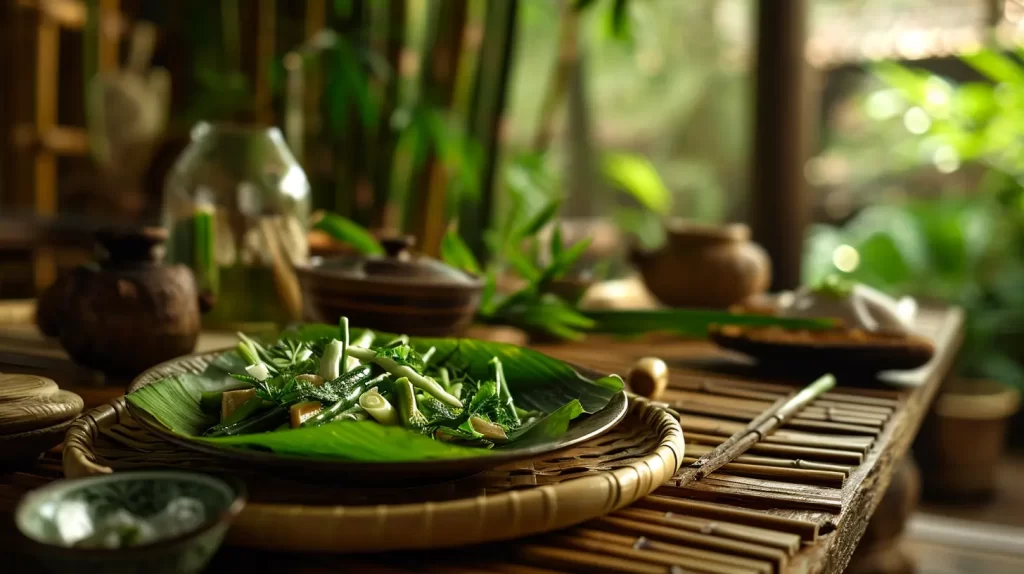
Introducing bamboo into your diet means more than just exploring new flavors. You’re stepping into a world of nutritional wonders! Let’s debunk the bamboo myths, especially around cyanide concerns, and discover how this green marvel contributes to your health and wellness. 🌱🍽️
Bamboo’s Nutritional Powerhouse: What’s Inside
Ever wonder what makes bamboo such a nutritional gem? 🌟 Here’s a peek at its bountiful offerings:
- Dietary Fiber:
- A key player in maintaining a healthy digestive system.
- Helps in stabilizing blood sugar, essential for those mindful of glycemic control.
- Vitamins & Minerals:
- Vitamin A: Not just for vision, but also crucial for robust immune function.
- Potassium: A vital mineral for maintaining heart health and balancing fluids in the body.
- Calcium: Essential not only for bone health but also for muscle function and nerve signaling.
- Phytonutrients:
- Possess anti-inflammatory properties, aiding in reducing the risk of chronic diseases.
- Antioxidants that combat cellular aging and promote overall health.
By integrating bamboo into your diet, you’re not just enjoying a crunchy, tasty snack. You’re also nourishing your body with elements crucial for maintaining vitality and health.
Health Wonders of Bamboo: Beyond Just Food
Bamboo transcends beyond being just an ingredient in your kitchen. It’s a holistic element for a healthier lifestyle:
- Fiber-Rich: Aids in smooth digestion and is a boon for those aiming for weight management.
- Protein and Low Calories: A rare combination making bamboo an ideal choice for anyone looking to maintain or lose weight, or for those in muscle-building regimes.
- Silica Content: This mineral is a secret ingredient for enhancing the health and appearance of your skin and hair, promoting a youthful glow and strength.
Incorporating bamboo into your meals is more than a culinary journey; it’s a commitment to a healthier, more balanced diet.
Debunking Myths: Cyanide in Bamboo Shoots
Addressing concerns about cyanide in bamboo, it’s crucial to understand the facts:
- The Right Preparation:
- Boiling bamboo shoots is crucial for neutralizing potential toxins.
- Refresh the boiling water halfway through to ensure complete safety.
- If you’re opting for canned or pickled bamboo, these are already processed to be safe for consumption.
With these simple cooking techniques, bamboo shoots are not just safe but also a nutritious addition to your diet. Packed with fiber, vitamins, and minerals, they contribute significantly to a healthy, balanced diet. So next time you’re considering bamboo in your meal, remember, it’s a delicious and safe choice that brings a host of nutritional benefits. 🌿🥗👨🍳
Navigating the Risks: Eating Bamboo Safely and Deliciously
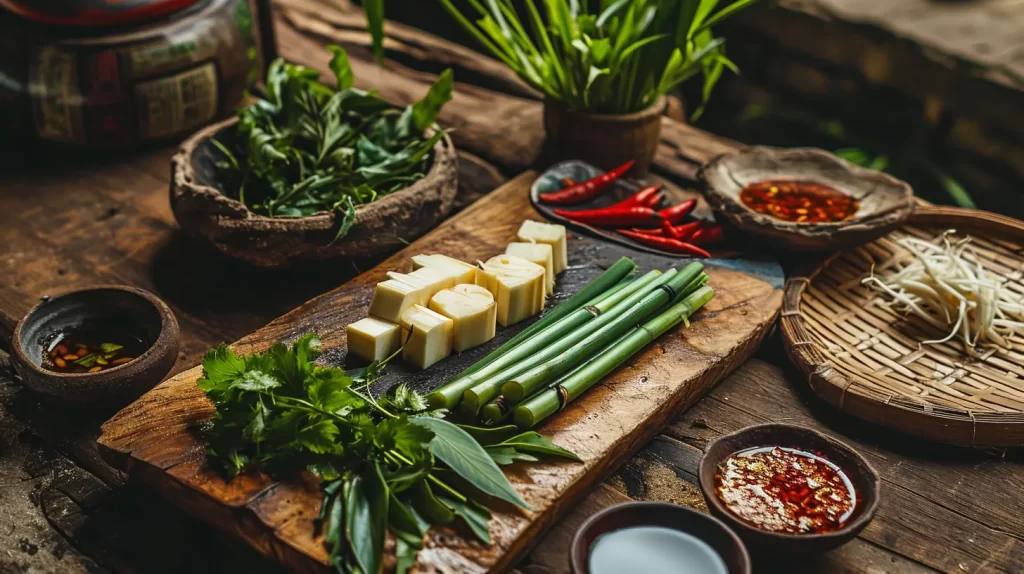
As you embark on the bamboo culinary journey, it’s crucial to navigate its risks to enjoy its unique flavors safely and healthily. Let’s dive into the aspects of cyanogenic glycosides in bamboo, understand essential safety precautions, and explore how traditional practices like fermentation and canning make bamboo not just delectable but also safe. 🌿🔍
Understanding Cyanogenic Glycosides in Bamboo
While bamboo shoots tantalize the taste buds, they also carry cyanogenic glycosides, which require careful handling:
- Key Preparation Techniques:
- Boiling: A vital step to detoxify the shoots by removing harmful compounds.
- Fermenting: This traditional method breaks down the glycosides, enhancing both safety and flavor.
- Slicing: Increases the surface area, allowing more efficient toxin removal during the cooking process.
- Awareness and Adaptation:
- Understand that these compounds can transform into cyanide if not properly processed.
- Regularly changing the water while boiling can further reduce any residual toxins.
Precautions with Bamboo: What You Need to Know
When it comes to relishing bamboo, being informed is the key to safety:
- Selecting the Right Type: Focus on bamboo species known for edibility to avoid potential toxicity.
- Avoiding Raw Consumption: Raw bamboo shoots contain glycosides that can be harmful. Boiling is essential.
- Choosing Shoots Wisely: Opt for young, tender shoots which are generally safer and more palatable.
- Foraging with Care: If you’re sourcing bamboo yourself, it’s critical to accurately identify edible varieties, possibly with expert advice.
- Special Considerations: Individuals with sensitive digestive systems or allergies should exercise additional caution.
Embracing these precautions ensures you can enjoy bamboo’s unique taste and nutritional benefits with peace of mind.
Fermentation and Canning: Safe Bamboo Consumption
Fermentation and canning are not just about preserving bamboo; they’re about unlocking its full culinary potential while ensuring safety:
- Fermentation:
- Enhancing Gut Health: Fermentation introduces beneficial probiotics, promoting better digestion.
- Making Nutrients Accessible: It breaks down complex compounds, making nutrients more available to your body.
- Preserving Naturally: This age-old technique extends the bamboo’s shelf life without artificial preservatives.
- Canning:
- Pathogen Elimination: The canning process uses high heat to kill off potential pathogens, ensuring safety.
- Maintaining Quality: It seals in the bamboo’s freshness, preserving its taste and nutritional value over time.
- Ready-to-Eat Convenience: Canned bamboo shoots offer the luxury of enjoying bamboo without the need for daily preparation.
By understanding and applying these methods, you can safely and delightfully incorporate bamboo into your diet, ensuring each dish is as nutritious as it is delicious. 🥘🌿
From Tradition to Trend: How Bamboo Elevates Culinary Experiences
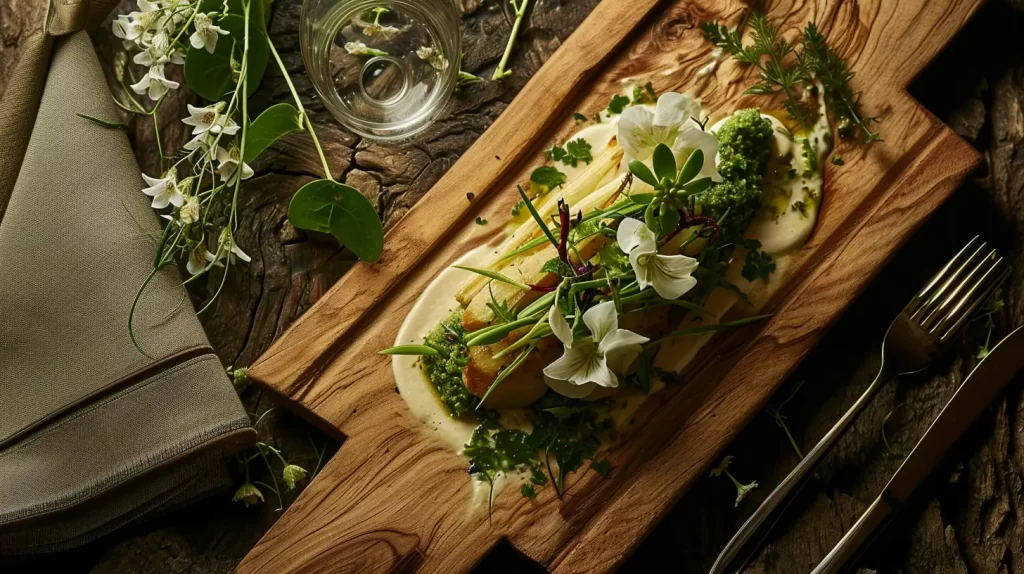
Bamboo is making a significant leap from an exotic ingredient to a modern culinary star. Chefs worldwide are embracing its unique flavor and texture, transforming traditional dishes into trendy, sought-after creations. From the heart of Northeast India’s culinary heritage to innovative global fusions, bamboo is revolutionizing green cuisine. 🌿🍴
Bamboo in Cooking: A Global Affair
The journey of bamboo in global cuisine is a story of evolution and sophistication:
- International Culinary Scene:
- Bamboo shoots are now a staple in diverse cuisines, prized for their crisp texture and subtle flavor.
- Utilized in everything from stir-fries and salads to more complex steamed dishes.
- Beyond the Shoots:
- Bamboo leaves are used to wrap foods, lending a distinct, grassy aroma during cooking.
- An emblem of sustainability, it’s increasingly popular in eco-conscious culinary circles.
From traditional Asian dishes to Western vegan plates, bamboo is carving out a niche as a versatile and sustainable ingredient in the culinary world.
Traditional vs. Modern: Bamboo Shoots in Culinary Arts
Bamboo shoots are a culinary bridge between tradition and modernity, offering a spectrum of flavors and textures:
- Traditional Uses:
- Central to many Asian stews and stir-fries, where they add a subtle, earthy depth.
- Pickled or fermented bamboo adds a tangy, flavorful dimension to dishes.
- Used as a wrapping for rice or meats, infusing them with a unique bamboo essence during steaming.
- Modern Culinary Twists:
- Emerging as a popular meat substitute in vegan dishes due to their hearty texture.
- Being innovatively infused into cocktails, adding an exotic botanical flavor.
- Employed as a fresh, crisp garnish, adding visual appeal and a burst of freshness to dishes.
In your culinary explorations, you’ll find that bamboo shoots are not just a testament to culinary heritage but are also shaping modern dining trends, offering endless possibilities for flavor and presentation. 🥘🌍🌿
Availability and Sourcing: Finding Bamboo Shoots for Your Kitchen
Discovering where and how to source bamboo shoots can turn your culinary experiments into delightful experiences. Whether you’re looking for the freshest shoots or convenient pre-prepared options, understanding where to find them is key. From local markets to online stores, let’s navigate the best places to procure this versatile ingredient, ensuring you have the best quality bamboo for your next cooking adventure. With the right sourcing tips, you’ll be ready to bring the unique taste and texture of bamboo right to your plate! 🥘🌱
Wrapping Up Our Bamboo Adventure: The Green Culinary Voyage Concludes
As we close the chapters of our bamboo escapade, it’s clear that this green giant is much more than just a plant—it’s a culinary revelation, a health ally, and an eco-friendly marvel. From the towering Dendrocalamus species to the tender shoots of young bamboo, we’ve journeyed through a forest of flavors, unlocking the secrets to selecting, preparing, and savoring bamboo in all its glory. 🥢🌱
We’ve seen how bamboo can transform from a humble garden resident to a star on our plates, enriching our meals with its subtle textures and flavors. We’ve dived into the nutritional depths of bamboo, celebrating its role in our wellbeing with every fiber-rich, vitamin-packed bite. 🍃🍴
Remember, whether you’re a seasoned chef or a curious foodie, bamboo offers a playground of possibilities for your culinary experiments. It’s not just about what you make; it’s about the adventure of making it. So, next time you spot bamboo at your local market or online store, remember the journey we’ve shared. Embrace the green, experiment with confidence, and let bamboo be the unsung hero of your kitchen adventures. 🌟👩🍳🌍
Here’s to many more green crunches and delightful dishes as you continue to explore the wonders of edible bamboo. Bon Appétit! 🥂🌿

Bamboo FAQ
What are the key health benefits of edible bamboo species?
Edible bamboo species are rich in nutrients such as protein, fiber, vitamins, and minerals. They are particularly notable for their high dietary fiber content and low caloric value, contributing to digestive health. Their antioxidant properties are beneficial, but direct claims regarding immune system enhancement should be approached with caution due to limited specific research in this area.
How do you harvest edible bamboo shoots?
Edible bamboo shoots can be harvested by cutting them close to the ground when they are still young and tender. It is important to properly identify the edible species and follow specific harvesting techniques to ensure safety and quality.
What are some traditional ways of preparing bamboo shoots for consumption?
Bamboo shoots can be boiled in water to remove bitterness, pickled, fermented, or used in various dishes such as stir-fries, curries, and soups in many cultures around the world, particularly in Asia.
What is the nutritional value of bamboo shoots?
Bamboo shoots are low in fat and calories but high in dietary fiber. While they provide some protein, their protein content is relatively moderate. They contain essential nutrients, including vitamin B6 and minerals like potassium and manganese. Claims of high vitamin A and E content should be moderated, as their levels vary among different species and preparation methods.
Are all species of bamboo edible?
No, not all species of bamboo are edible. It is important to identify specific edible species such as Dendrocalamus strictus and ensure proper processing to remove toxins such as taxiphyllin.
Can bamboo shoots be eaten raw?
In most cases, bamboo shoots should not be eaten raw due to their bitter taste and the presence of potentially harmful compounds such as taxiphyllin, which can be removed through proper cooking methods.
What are some important traditional foods that use bamboo shoots?
Bamboo shoots are used in a wide range of traditional dishes in various cuisines, including Southeast Asian, Indian, and Chinese, where they are valued for their unique flavor and nutritional benefits.
Are there any specific health concerns associated with consuming bamboo shoots?
Some bamboo shoots contain cyanogenic glycosides, such as taxiphyllin, which can release cyanide when consumed. However, proper processing and cooking can effectively mitigate this risk.
What is the potential of bamboo as a sustainable food source?
Bamboo has the potential to be a sustainable and nutritious food source due to its fast growth, low environmental impact, and high nutritional value. It can contribute to food security and agricultural diversity.
How are bamboo shoots used in modern culinary practices?
Bamboo shoots are used in various modern culinary practices, including as ingredients for noodles, salads, pickles, and as a substitute for traditional vegetables in a wide range of international cuisines.

